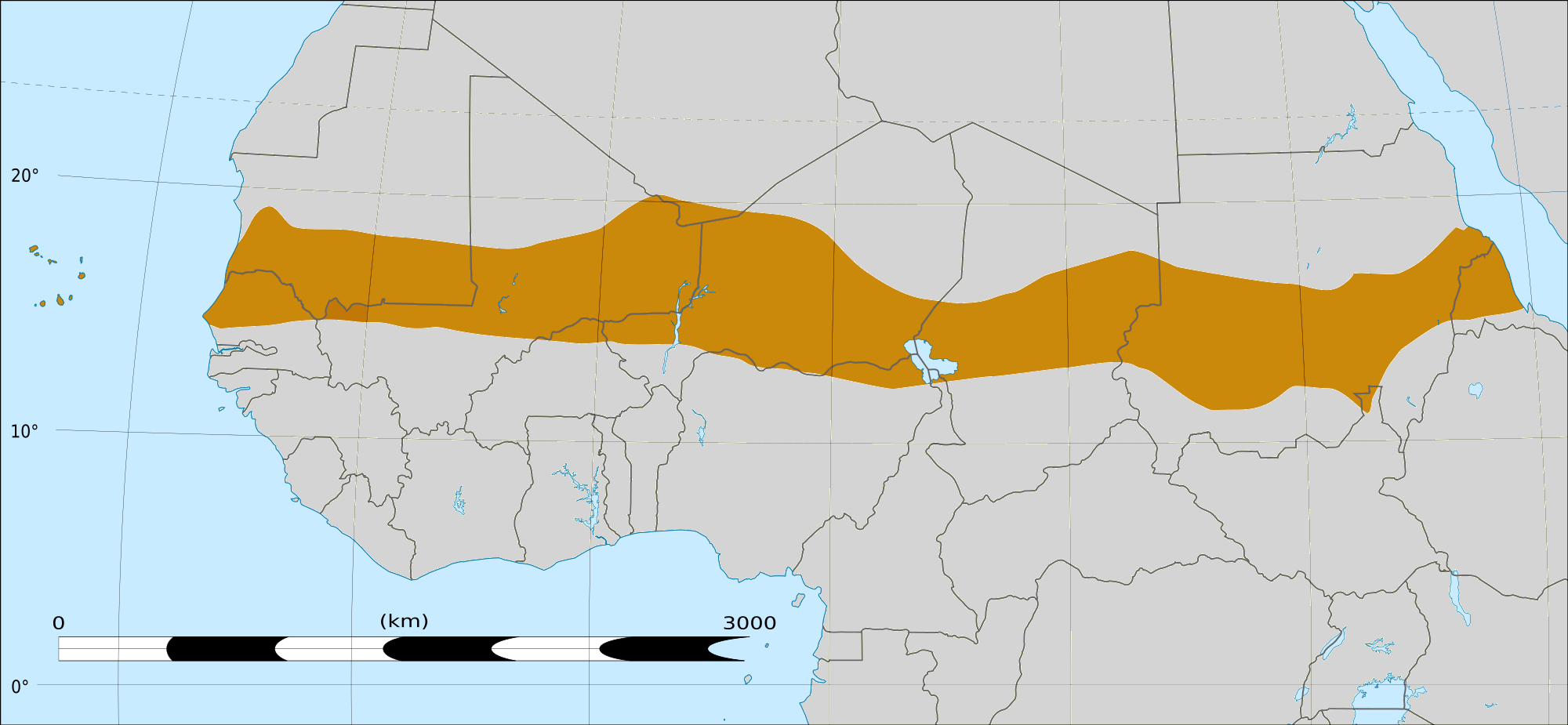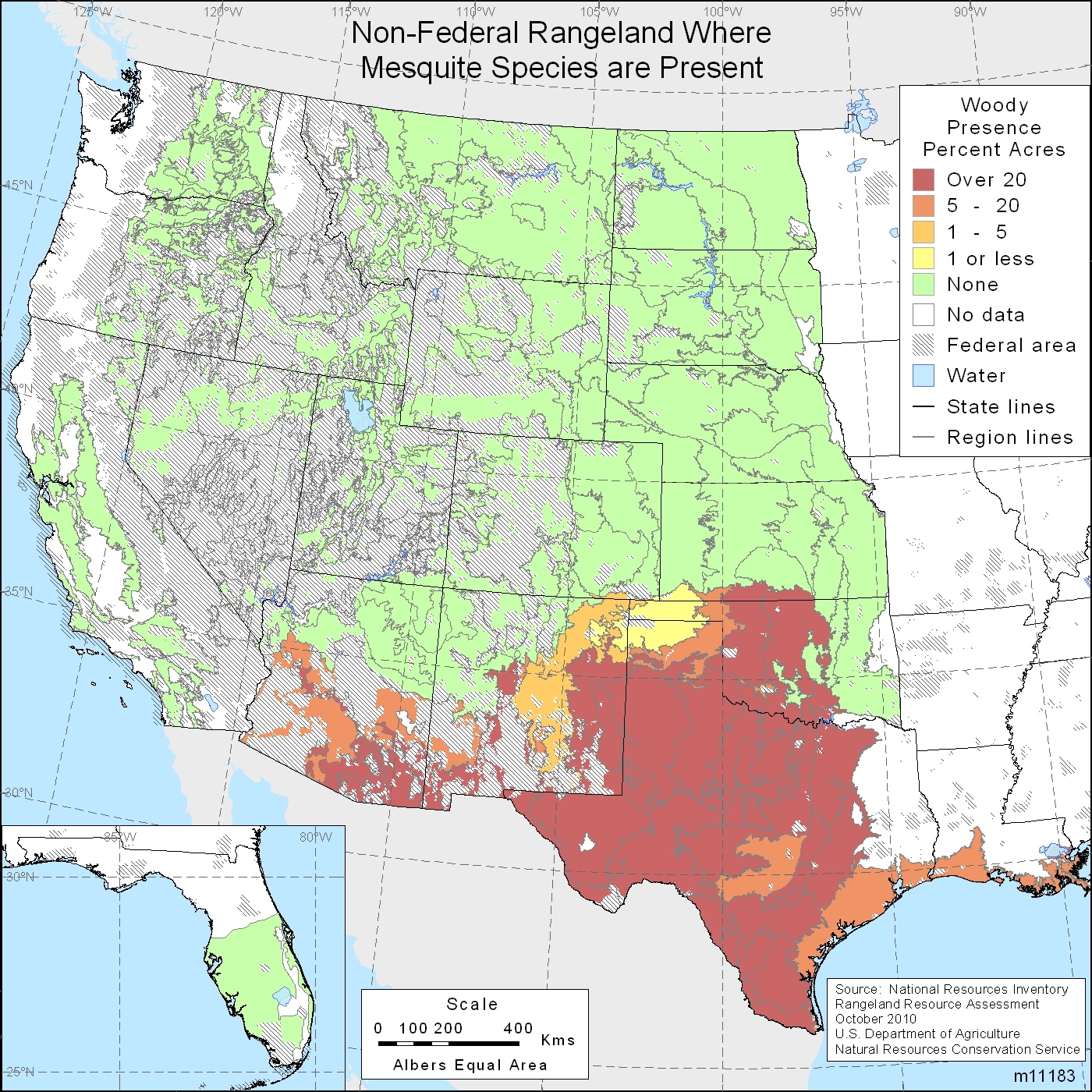|
Barchan
A barchan or barkhan dune (from Kazakh бархан ) is a crescent-shaped dune. Russian naturalist Alexander von Middendorf introduced the term in 1881, working from the occurrence of barchans in Turkestan and in other inland desert regions. Barchans "face" the wind, appearing convex, and are produced by wind action predominantly from one direction. They are a very common landform in sandy deserts all over the world and are arc-shaped, markedly asymmetrical in cross section, with a gentle slope facing toward the wind sand ridge, comprising well-sorted sand. This type of dune possesses two "horns" that face downwind, with the steeper slope known as the slip face, facing away from the wind, downwind, at the angle of repose of the sand in question, approximately 30–35 degrees for medium-fine dry sand. The upwind side is packed by the wind, and stands at about 15 degrees. Barchans may be high and wide at the base measured perpendicular to the wind. Simple barchan ... [...More Info...] [...Related Items...] OR: [Wikipedia] [Google] [Baidu] |
Dune
A dune is a landform composed of wind- or water-driven sand. It typically takes the form of a mound, ridge, or hill. An area with dunes is called a dune system or a dune complex. A large dune complex is called a dune field, while broad, flat regions covered with wind-swept sand or dunes, with little or no vegetation, are called ''Erg (landform), ergs'' or ''sand seas''. Dunes occur in different shapes and sizes, but most kinds of dunes are longer on the wiktionary:stoss, stoss (upflow) side, where the sand is pushed up the dune, and have a shorter ''slip face'' in the lee side. The valley or trough between dunes is called a ''dune slack''. Dunes are most common in desert environments, where the lack of moisture hinders the growth of vegetation that would otherwise interfere with the development of dunes. However, sand deposits are not restricted to deserts, and dunes are also found along sea shores, along streams in semiarid climates, in areas of Outwash plain, glacial outwash ... [...More Info...] [...Related Items...] OR: [Wikipedia] [Google] [Baidu] |
Sandy Desert
A desert is a landscape where little precipitation occurs and, consequently, living conditions create unique biomes and ecosystems. The lack of vegetation exposes the unprotected surface of the ground to denudation. About one-third of the land surface of the Earth is arid or semi-arid. This includes much of the polar regions, where little precipitation occurs, and which are sometimes called polar deserts or "cold deserts". Deserts can be classified by the amount of precipitation that falls, by the temperature that prevails, by the causes of desertification or by their geographical location. Deserts are formed by weathering processes as large variations in temperature between day and night strain the rocks, which consequently break in pieces. Although rain seldom occurs in deserts, there are occasional downpours that can result in flash floods. Rain falling on hot rocks can cause them to shatter, and the resulting fragments and rubble strewn over the desert floor are further e ... [...More Info...] [...Related Items...] OR: [Wikipedia] [Google] [Baidu] |
Angle Of Repose
The angle of repose, or critical angle of repose, of a granular material is the steepest angle of descent or Strike and dip, dip relative to the horizontal plane on which the material can be piled without slumping. At this angle, the material on the slope face is on the verge of sliding. The angle of repose can range from 0° to 90°. The morphology of the material affects the angle of repose; smooth, rounded Sand, sand grains cannot be piled as steeply as can rough, Shear strength (soil), interlocking sands. The angle of repose can also be affected by additions of solvents. If a small amount of water is able to bridge the gaps between particles, electrostatic attraction of the water to mineral surfaces increases the angle of repose, and related quantities such as the bearing capacity, soil strength. When bulk granular materials are poured onto a horizontal surface, a cone (geometry), conical pile forms. The internal angle between the surface of the pile and the horizontal sur ... [...More Info...] [...Related Items...] OR: [Wikipedia] [Google] [Baidu] |
Barkhane
Operation Barkhane ( French: ''Opération Barkhane'') was a counterinsurgency operation that started on 1 August 2014 and formally ended on 9 November 2022. It was led by the French military against Islamist groups in Africa's Sahel regionFrance sets up anti-Islamist force in Africa's Sahel bbc.co.uk. and consisted of a roughly 3,000-strong French force, which was permanently headquartered in , the capital of . The operation was led in co-operation with five countries, all of which are former French colonies that ... [...More Info...] [...Related Items...] OR: [Wikipedia] [Google] [Baidu] |
Crescent
A crescent shape (, ) is a symbol or emblem used to represent the lunar phase (as it appears in the northern hemisphere) in the first quarter (the "sickle moon"), or by extension a symbol representing the Moon itself. In Hindu iconography, Hindu Iconography, Shiva is often shown wearing a crescent moon on his head, symbolising his control over time, as well as his attributes of both creation and destruction. It is used as the astrological symbol for Moon (astrology), the Moon, and hence as the alchemical symbol for silver. It was also the emblem of Diana (mythology), Diana/Artemis, and hence represented virginity. In veneration of Mary in the Catholic Church, it is associated with Mary, mother of Jesus. From its use as roof finial in Ottoman architecture, Ottoman mosques, it has also become associated with Islam, and the crescent was introduced as Religious symbolism in the United States military#Muslim, chaplain badge for Muslim United States military chaplains in 1993.On Dece ... [...More Info...] [...Related Items...] OR: [Wikipedia] [Google] [Baidu] |
Alexander Von Middendorf
Alexander Theodor von Middendorff (; 18 August 1815 – 24 January 1894) was a Russian zoologist and explorer of Baltic German and Estonian extraction. He was known for his expedition in 1843–45 to the extreme north and east of Siberia, describing the effects of permafrost on the spread of animals and plants. Early life Middendorff's mother, Sophia Johanson (1782–1868), the daughter of an Estonian farmer, had been sent to Saint Petersburg for education by her parents. There, she met with the future director of the St. Petersburg Pedagogical Institute, Theodor Johann von Middendorff (1776–1856), whose father was a Baltic German pastor in Karuse, Estonia. As the two young people came from different social ranks and were unable to marry each other, their daughter Anette (b. 1809) and son Alexander were born out of wedlock. Alexander was born on 18 August 1815 in St. Petersburg, but could not be baptized until six months later in the Estonian Lutheran Congregation of St. Pe ... [...More Info...] [...Related Items...] OR: [Wikipedia] [Google] [Baidu] |
Turkestan
Turkestan,; ; ; ; also spelled Turkistan, is a historical region in Central Asia corresponding to the regions of Transoxiana and East Turkestan (Xinjiang). The region is located in the northwest of modern day China and to the northwest of its borders, and extends directly to the east of the Caspian Sea. Turkestan is primarily inhabited by Turkic peoples, as well as Russian and Tajik-Persian minorities. Turkestan is subdivided into Afghan Turkestan, Russian Turkestan, and East Turkistan (the Xinjiang Uyghur Autonomous Region in China). Throughout history, the region has been exposed to the invasion of several different groups and kingdoms, including the Huns, Hepthalites, Bactrians, Sogdians also for a short period of time the Imperial China, Arab Caliphate, Hellenistic Macedonian Empire, as well as Achaemenid Empire, various Turkic forces and the Mongol Empire. The Qara Khitai also briefly controlled the majority of Turkestan's land. Overview Known as Turan to the Pe ... [...More Info...] [...Related Items...] OR: [Wikipedia] [Google] [Baidu] |
Mesquite Sand Dunes
Mesquite is a common name for some plants in the genera ''Neltuma'' and ''Strombocarpa'', which contain over 50 species of spiny, deep-rooted leguminous shrubs and small trees. They are native to dry areas in the Americas. Until 2022, these genera were traditionally included in a broad view of the genus ''Prosopis'', but that genus is now restricted to a few species native to the Old World. Mesquites have extremely long roots to seek water from very far under ground. As they are legumes, mesquites are one of the few sources of fixed nitrogen in the desert habitat. The trees bloom from spring to summer. They often produce fruits known as "pods". Mesquites are able to grow up to tall, depending on site and climate. They are deciduous and depending on location and rainfall have either deep or shallow roots. Mesquites are considered long-lived because of the low mortality rate after the dicotyledonous stage and juveniles are also able to survive in conditions with low light and drou ... [...More Info...] [...Related Items...] OR: [Wikipedia] [Google] [Baidu] |
Wind
Wind is the natural movement of atmosphere of Earth, air or other gases relative to a planetary surface, planet's surface. Winds occur on a range of scales, from thunderstorm flows lasting tens of minutes, to local breezes generated by heating of land surfaces and lasting a few hours, to global winds resulting from the difference in absorption (electromagnetic radiation), absorption of solar energy between the climate zones on Earth. The study of wind is called anemology. The two main causes of large-scale atmospheric circulation are the differential heating between the equator and the poles, and the rotation of the planet (Coriolis effect). Within the tropics and subtropics, thermal low circulations over terrain and high plateaus can drive monsoon circulations. In coastal areas the sea breeze/land breeze cycle can define local winds; in areas that have variable terrain, mountain and valley breezes can prevail. Winds are commonly classified by their scale (spatial), spatial ... [...More Info...] [...Related Items...] OR: [Wikipedia] [Google] [Baidu] |






